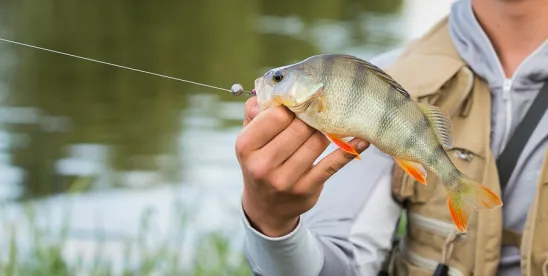On June 11, 2018, an equally divided United States Supreme Court affirmed per curiam the Ninth Circuit’s decision in United States v. Washington, known as the “Culvert Case.” The lower courts had found that numerous road culverts blocked salmon access to habitat to an extent that violated treaty rights and necessitated their removal. The Supreme Court affirmed by an equally divided Court the decision with no written opinion. The divided per curiam decision means that the Supreme Court did not clarify the rules that could apply in similar situations down the road. Nevertheless, the Culvert decision is still likely to impact a wide range of regulatory and permitting issues in Washington and potentially throughout the Pacific Northwest in coming years. It could have broad implications for government and private entities that own, manage, and/or control structures, including tide gates, floodgates, and dams, which block or diminish salmon runs in Washington, as well as local, state, and federal permitting regimes.
The Ninth Circuit Decision
The Culvert Case is the most recent in a line of cases interpreting and defining the treaty-protected fishing rights of Northwest Indian tribes, commonly known as U.S. v. Washington. In 2001, twenty-one tribes (the “Tribes”) brought a new subproceeding alleging State-owned culverts blocking salmon from their spawning grounds infringe upon the Tribes’ treaty-protected fishing rights.
In 2017, the Ninth Circuit affirmed the district court’s injunction requiring the State to repair and replace State-owned culverts prohibiting free passage of fish to spawning grounds and other important habitats. The court interpreted the Tribes’ treaty right to take fish to include protection of fishery habitat from man-made degradation. It found that such degradation includes culverts owned by the State of Washington that block free passage of salmon. The court agreed with the district court’s finding of a significant decrease in salmon stocks in the state since 1985 and emphasized evidence showing that barrier culverts block hundreds of thousands of salmon from reaching their spawning grounds. [1]
Potential Implications for Regulators and Private Parties
Going forward, Washington tribes may ask courts within the Ninth Circuit, as well as state and federal regulators, to examine and consider whether other man-made environmental degradation of fish habitats in the region also violate their treaty protected fishing rights. As a result, although the Culvert Case applies solely to specific habitat-blocking culverts owned by Washington State, it could have broad implications for other government and private entities that own, manage, and/or control structures, including tide gates, floodgates, and dams, which block or diminish salmon runs in Washington, as well as local, state, and federal permitting regimes. While the treaties in Oregon and Idaho have some differences, the decision will likely impact regulatory decisions in those state as well.
Tribes may argue that the decision and principles announced in the Culvert Case should apply in the context of regulations, environmental review documents, and permit decisions affecting water temperature, ocean acidification, and bank hardening (both freshwater and near-shore tidal waters), and similar environmental conditions that might degrade salmon habitat or cause a decline in salmon runs. Indeed, regulators have already started invoking the Culvert decision to protect tribal rights not explicitly covered by the decision itself. The preamble to EPA’s 2016 revision of human health water quality standards applicable to Washington, for example, discusses the relevance of the Ninth Circuit’s decision, noting that the decision supports “the interpretation of tribal fishing rights to include the right to sufficient water quality to effectuate the fishing right.” [2]
There are limits, however, to the reach of the Culvert Case. It is still grounded in equitable principles that require a clear and distinct showing of an actual impact on fish passage and treaty-protected fishing rights and a balancing of the interests and hardships of the parties before the court. The facts of the Culvert Case were distinct because the State of Washington had identified road culverts as a substantial threat to salmon, and it is unclear how far the courts will extend the treaty right and remedy beyond the specific facts of this case. The Culvert decision does not contain clear guidance that would apply to other situations and the dissent to the denial of rehearing en banc suggest that future litigants may face challenges in expanding or applying the right outside of this specific context. Notably, the dissent — likely aimed at the Supreme Court — called the denial of rehearing a “regrettable choice” and emphasized that “rather than reining in a runaway decision” the court chose to do nothing, “tacitly affirming the panel opinion’s erroneous reasoning.” [3] Regulators and private parties must be aware of this limitation and take it into consideration when applying the Culvert Case to future scenarios and causes of action.
Conclusion
While the contours of the Culvert Case and its lasting impacts are still unclear, it has now survived Supreme Court review. The Supreme Court decision leaves in place a significant Ninth Circuit decision that requires the State of Washington to undertake a lengthy and expensive course of culvert removal. While the actual order in the Culvert Case is narrowly drawn, we expect it to resonate for years with both tribal and nontribal parties. Further, the Supreme Court’s inability to reach a majority decision is a missed opportunity for the Court to provide the tribes, regulators, and the regulated community with clear guidance on the extent of the treaty right to take fish in the context of man-made environmental impacts to salmon.
Notes:
[1] United States v. Washington, No. 13-35474, order and amended op. at 58 (9th Cir. Mar.2, 2017).
[2] EPA, Revision of Certain Federal Water Quality Criteria Applicable to Washington, 81 Fed. Reg. 228, 85424, fn. 39 (Nov. 28, 2016).
[3] United States v. Washington, No. 13-35474, order at 19 (9th Cir. May 19, 2017). Seven judges joined the dissent in full, and two judges joined the dissent in part.






 />i
/>i
